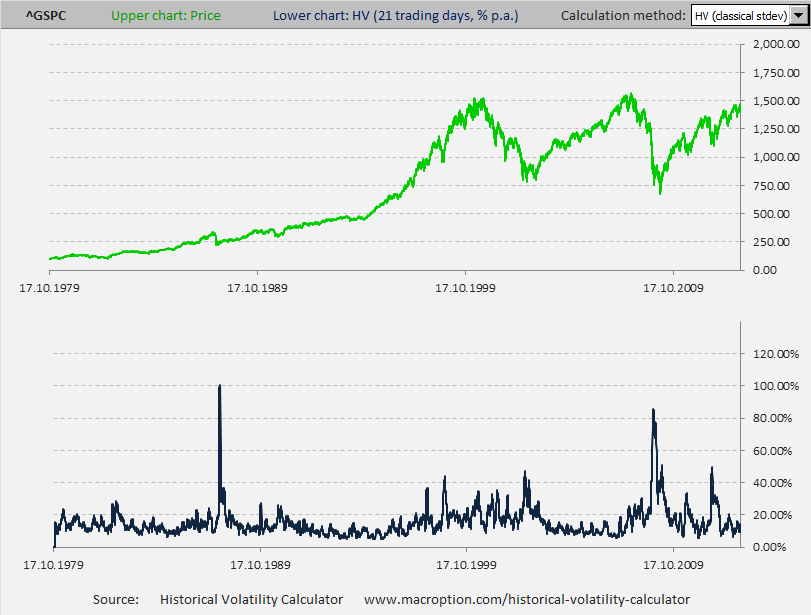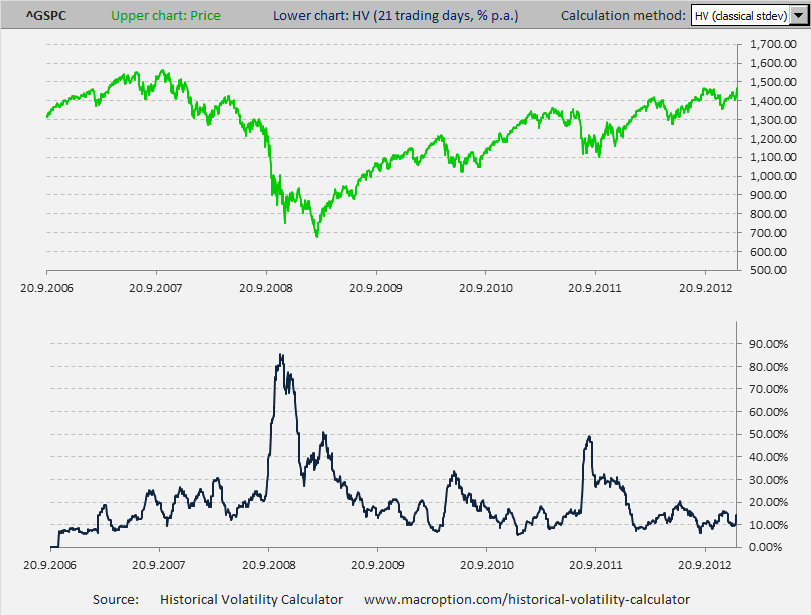Volatility Is Not Constant
The answer to the question is very simple:
Volatility is anything but constant.
In fact, historical volatility of many securities has been more volatile than the securities themselves.
Volatility Value Range
Theoretically, volatility can reach any value from zero to positive infinite. Here you can find more detailed explanation:
- Can Volatility Be Negative? (No)
- Can Volatility Be Over 100? (Yes)
- Is Volatility a Percentage? (Yes, but not always)
In practice, volatility of most commonly traded securities (such as stocks) fluctuates between high single digit or low double digit percent per annum to high double digit percent per annum. Some very volatile stocks regularly reach volatility above 100%. Volatility usually goes up during times of financial crises when the stock market falls. For individual stocks, volatility often goes up around the time when the company reports its quarterly earnings.
Example: Volatility of US Stocks Is Not Constant
Below you can see a chart of the S&P500 index (the mostly watched index of US stocks) since 1979. The green line in the upper half is the value of the index. The blue line at the bottom is historical volatility.

As you can see, most of the time the volatility stayed below 30%, with occasional spikes. The biggest spikes occured in 1987 (the infamous stock market crash) and in 2008 (following Lehman collapse during the financial crisis). Even during the periods when volatility was very low and quite stable, it was never constant.
Below you can see the same chart in greater detail for the most recent years.

Historical volatility in the charts above was calculated as 21-trading-day standard deviation of logarithmic returns, which is the most popular method of calculating volatility. The charts were created in the Historical Volatility Calculator.